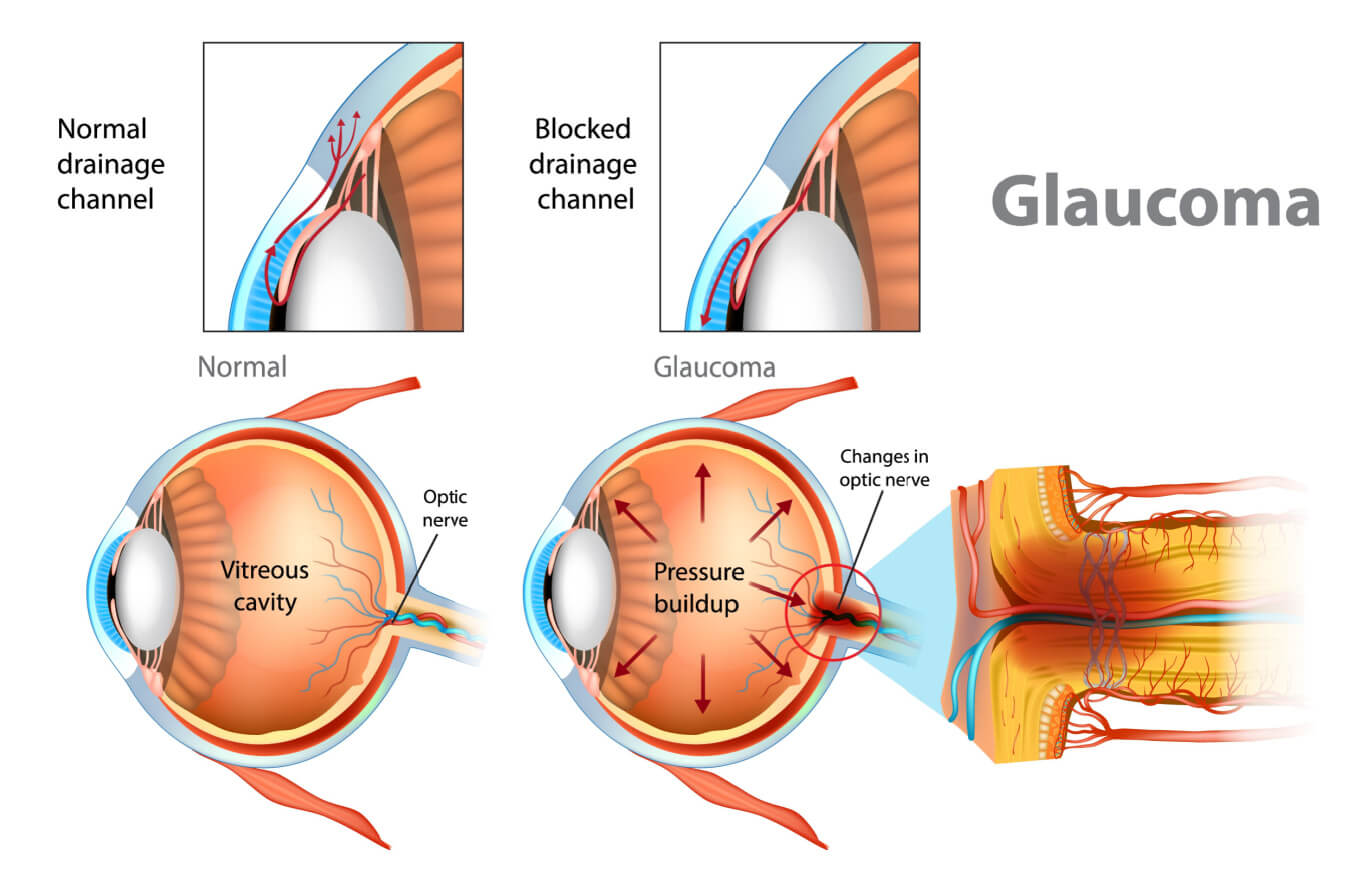Glaucoma
What is Glaucoma?
Glaucoma is a group of eye conditions that damage the optic nerve, which is essential for vision. This damage is often
caused by abnormally high pressure in the eye (intraocular pressure, or IOP), although glaucoma can occur even with
normal eye pressure. It is a leading cause of irreversible blindness worldwide.

Types of Glaucoma
- Primary Open-Angle Glaucoma (POAG):
- Most common form.
- Develops gradually and painlessly.
- Drainage canals in the eye become less efficient, leading to increased eye pressure.
- Angle-Closure Glaucoma:
- Also known as narrow-angle glaucoma.
- Occurs when the drainage angle between the iris and cornea is blocked.
- Can develop suddenly (acute) or gradually (chronic).
- Acute angle-closure glaucoma is a medical emergency.
- Normal-Tension Glaucoma:
- Optic nerve damage occurs even though intraocular pressure is within the normal range.
- Causes are not fully understood but may involve reduced blood flow to the optic nerve.
- Secondary Glaucoma:
- Results from an underlying condition such as eye injury, inflammation, or steroid use.
- Congenital Glaucoma:
- Rare form present at birth due to improper development of the eye's drainage system.
.png)
Symptoms
Open-Angle Glaucoma:
- No early symptoms (gradual vision loss begins in the periphery).
Acute Angle-Closure Glaucoma:
- Severe eye pain.
- Nausea and vomiting.
- Blurred vision.
- Halos around lights.
- Redness of the eye.
Congenital Glaucoma:
- Excessive tearing.
- Light sensitivity.
- Enlarged or cloudy eyes.
Diagnosis
Glaucoma is diagnosed through a comprehensive eye exam, which may include:
- Tonometry: Measures intraocular pressure.
- Ophthalmoscopy: Examines the optic nerve for damage.
- Visual Field Test: Detects peripheral vision loss.
- Gonioscopy: Inspects the drainage angle in the eye.
- Pachymetry: Measures corneal thickness.
Risk Factors
- Age: People over 60 are at higher risk.
- Family History: Glaucoma can run in families.
- Ethnicity: Higher prevalence in African, Asian, and Hispanic populations.
- Medical Conditions: Diabetes, high blood pressure, and heart disease.
- Eye Conditions: Thin corneas, severe myopia, or past eye trauma.
- Prolonged Steroid Use: Especially eye drops.
Treatment
- Medications:
- Eye drops (e.g., prostaglandins, beta-blockers, alpha agonists).
- Oral medications (e.g., carbonic anhydrase inhibitors).
- Laser Therapy:
- Trabeculoplasty for open-angle glaucoma.
- Iridotomy for angle-closure glaucoma.
- Surgery:
- Trabeculectomy: Creates a new drainage pathway.
- Drainage Implants: Places a device to help drain fluid.
- Minimally Invasive Glaucoma Surgery (MIGS): Less invasive options for reducing pressure.
- Lifestyle Changes:
- Regular exercise (consult your doctor for appropriate activities).
- Avoid activities that increase intraocular pressure (e.g., yoga poses that involve headstands).
Prevention and Management
- Regular comprehensive eye exams, especially for high-risk individuals.
- Early detection is key to preventing vision loss.
- Follow prescribed treatments strictly.
- Maintain a healthy lifestyle to reduce risks.
4.png)